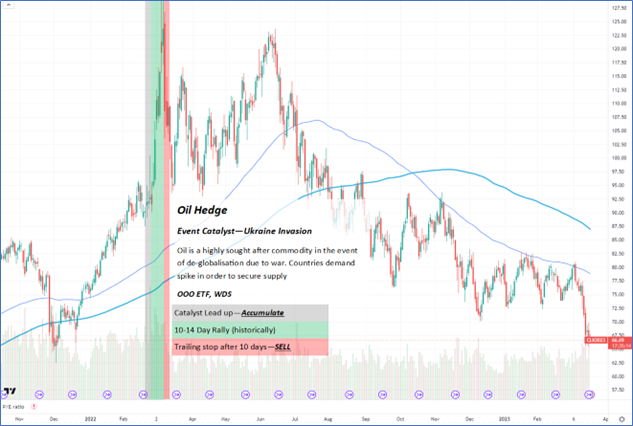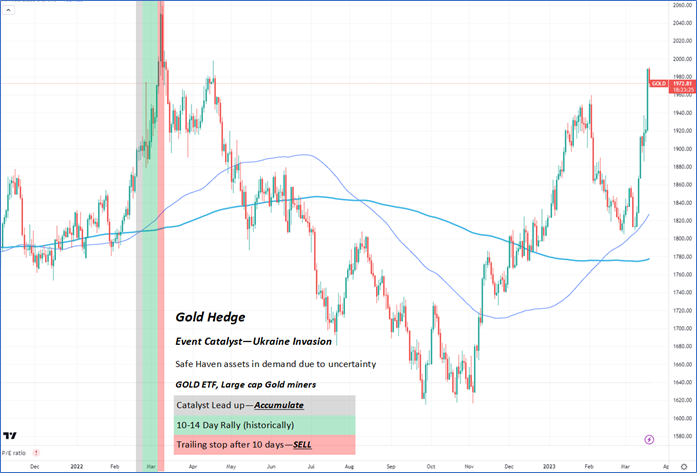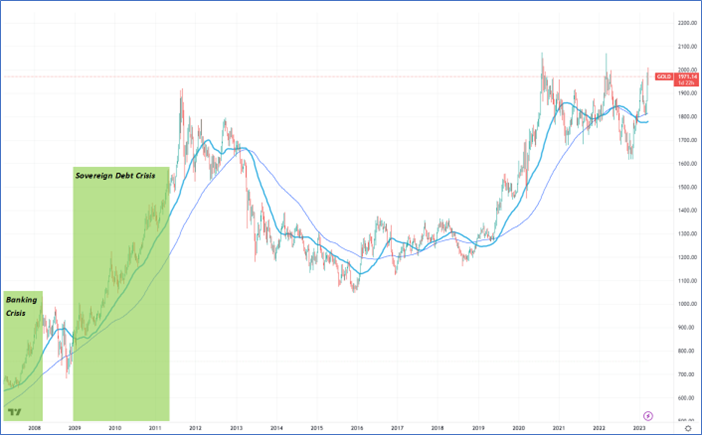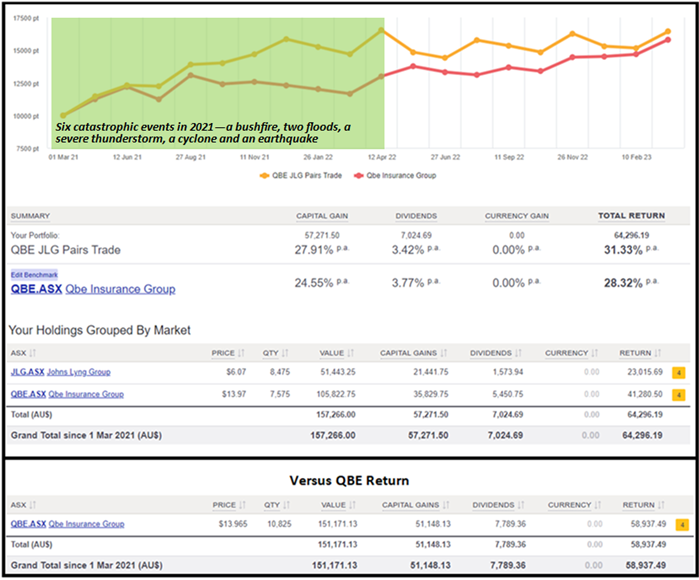The art of hedging your portfolio
I’m often asked by clients about hedging their portfolios and almost always they are confused that I have a different answer each time.
Hedging is far more art than science and it’s rarely as simple as just shorting the market. There are different approaches for different situations, from geopolitical risks, spread trades, or simply reducing your exposure when you think the market has rallied to lofty heights.
In this wire, I have outlined a few playbooks for hedging and some accompanying examples to help investors smooth the risk of their portfolios.
Types of Hedges
- Index short
- Safe Haven
- Spread (or “pairs”) Trade
Index Short
These can be used to insulate your portfolio for various reasons. You may want to hold the positions in your portfolio and are worried about a market pullback, general market uncertainty, turn in the economic cycle, and interest rate movements are just a few reasons you might consider a hedge. The key here is to think about what risk you are attempting to insulate your portfolio from and use the ETF that best fits the purpose.
- BEAR – Short ASX200 Accumulation Index
- BBOZ -Leveraged short ASX200 Accumulation Index
- BBUS - Leveraged short S&P500 Total Return Index
- SNAS - Leveraged short Nasdaq 100
Examples of when to use an index short
Rising interest rates – In early 2022 when the US2Y shot back through 1% for the first time in years, growth stocks were the obvious weak point in the market. In this case SNAS (short Nasdaq) was our preferred choice because the sell-off was based on growth stocks, not value stocks. A short in 2022 over the ASX 200 would have yielded you around 6%, whereas a short in the Nasdaq was 33%
Reporting season - after the January rally this year, the index was only 2% from record highs with central banks continuing to hike rates due to inflation. Our view was the index would fall back to around 7000, however, we wanted to hold our core positions through reporting season as we were of the view that they would report well. We hedged our positions using an index short and to date, the XJO has fallen 7.4% while our core holdings in CSL, WES and AD8 outperformed the index by 3.8%, 7.1% and 24% respectively. Now the market has drifted back to 7000, we have taken off the hedge and left our core positions on. in this case you would likely choose BBOZ as you want a like-for-like short against your portfolio.
An unexpected market event – When these occur, the market moves quickly, and trying to sell multiple stocks in a busy market is a logistical nightmare. When volatility is high, it is best to keep it simple, make one decision in buying a hedge, and avoid making multiple decisions that make you vulnerable to multiple mistakes. An example of this would be COVID, the high inflation prints last year, or the banking sector meltdown last week.
It's always better to hedge when you can, not when you need. Ideally, you will be abreast of emerging situations or upcoming calendar events that might trigger a sharp move and hedge in smaller size prior to the event, rather than after.
Safe Haven
Safe haven hedges are used during geopolitical or financial instability periods. A short index ETF would also work in this situation; however, you have more options in case the horse has already bolted in the equity market.
Geopolitical events will see a scramble for necessary commodities in the event of de-globalisation due to war. Gold, oil and bonds are reliable plays in the event of political instability.
Financial instability generally sees distrust in the fiat currency system and corporate debt, gold and government bonds are usually favoured in this instance.
- Gold – Gold stocks or GOLD ETF
- Oil – OOO ETF BetaShares Crude Oil Idx ETF-Currency Hgd(Synth)
- Bonds - CRED ETF BetaShares Australian Investment Grade Corporate Bond ETF or USTB ETF Global X Us Treasury Bond (Currency Hedged) ETF
Examples of when to use a safe haven
Geopolitical - When a geopolitical event occurs, the rules change slightly. An index short will still work, however, you have more options. Gold, oil and (some) commodities tend to rally sharply, but not for long. The average period of a rally in gold and oil is generally between 10-14 trading days, so you need to be agile. The example I’ve used here is the Russia/Ukraine invasion where we accumulated gold and oil leading into the conflict, as rumours of military action were rife.
Both positions were added to at the time of the invasion, and we maintained strict timing parameters for the trade as it was designed to buffer the portfolio performance, not be a long-term trade.


Banking Crisis – in these situations, faith is lost in the financial system and the Fiat currency system. This drives investors to finite stores of value like gold, silver and most recently, even cryptocurrency.
Below is a chart of gold with the 2007-2008 Banking Crisis and the 2009-2011 Sovereign Debt Crisis, where gold rallied significantly as investors first lost faith in banks, and then lost faith in countries. In the most recent scare, we also saw the most commonly used cryptocurrencies, Bitcoin and Ethereum, rally 35% and 17% respectively, which signalled the possibility that crypto may be a valid safe haven if it matures into an asset class in future

It’s important to remember, index shorts and safe havens are a strategy used to buffer your portfolio against broader short-term weakness, they aren’t an investment.
Spread or “pairs” trades
A spread, or “pairs” trade is when you hold a position in two (or more) companies to smooth the risk of the holding. This can be used to plug a transitory weakness in a company’s business model like inflation.
For example, owning the retailer and a REIT to insulate against rising rents or buying underlying commodities against a mining company. The example I will use here is in the insurance sector, where we thought the number crunchers weren’t pricing in enough “once in a 100-year” floods, droughts, fires etc.
Insurance Sector - We liked ASX: QBE with interest rates expected to rise, but the extreme weather's statistical anomaly made us hesitant. So, to remove the risk of paying out more often than the insurer’s modelling allowed, our solution was to buy BOTH QBE and their contracted repairer, John Lyng Group ASX: JLG.
This allowed us to benefit from the rising rate environment that is favourable for QBE and also benefit from any increase in claims due to the statistical increase in weather events in 2021 (highlighted in green) In the aftermath of these events, the “pairs trade” outperformed by 23% over the year and, as the diagram below shows, still outperforms by 3% per annum to this day.

While hedging often isn’t a simple proposition, saving money is as good as making money so it is worthwhile taking as much time considering where the exits are, as you spend on what companies you are considering buying.
When used effectively, hedging can smooth and improve the long-term returns of your portfolio and reduce your risk (and stress levels)
5 topics
9 stocks mentioned

